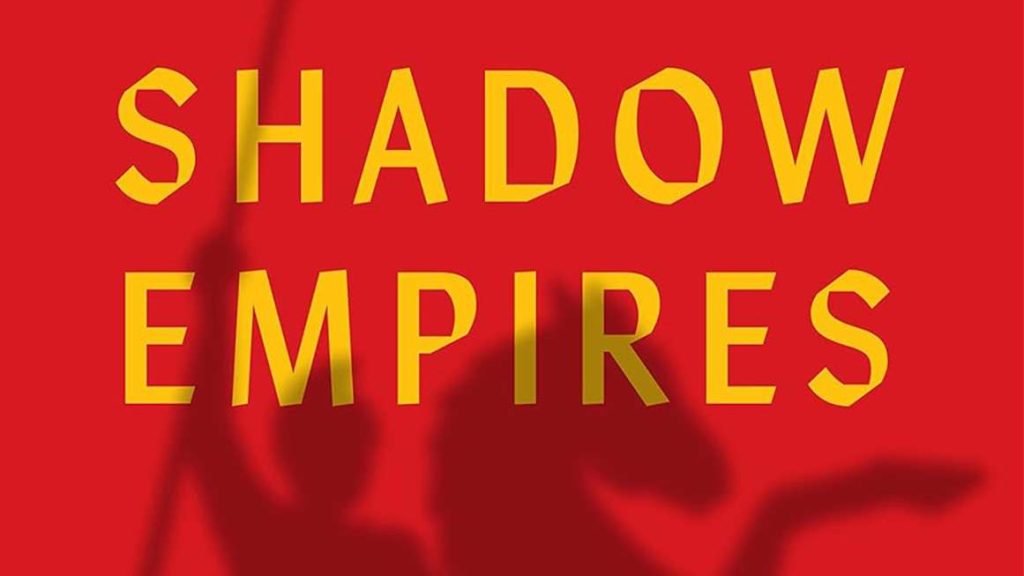Shadow Empires: An Alternative Imperial History, by Thomas J. Barfield, Princeton University Press, 384 pages, $35
In his classic book Afghanistan: A Cultural and Political History, the anthropologist Thomas Barfield argued that Afghan society had seen stability only when its rulers respected the diversity of the country’s communities and allowed them some space to govern themselves. In Shadow Empires: An Alternative Imperial History, Barfield extends this argument to empires throughout history. The most important ingredient in imperial longevity, he argues, wasn’t brutality; it was respect for pluralism. The empires whose rules had more room for cultural difference were the empires more likely to thrive.
To be an empire, by Barfield’s definition, a state must have at least 5 million square kilometers and at least 40 million people. Within those criteria, he distinguishes two groups. Endogenous empires are created through a process of internal development and outward expansion. They are large, they rely on direct taxation or tributes for revenue, and they include some of the best-known empires in history: the Romans, the Chinese, the Ottomans. Exogenous empires emerge from their interaction with already-established empires. Rather than depending on internal revenue to support themselves, they rely on trade, raids, and piracy.
While most people associate imperial rule with endogenous empires, Barfield focuses on the exogenous examples—the “shadow empires” of his title. Like Adam’s rib, these emerged from the flesh of their progenitors to grow into something more complex and beautiful.
***
Barfield identifies five main varieties of shadow empires:
Maritime empires built their power by controlling sea trade routes and ports, extracting wealth primarily through trade dominance rather than territorial expansion. They include ancient Athens and, more recently, the Portuguese and British empires. Steppe nomadic empires had dispersed populations and few urban centers. They relied on pastoralism and military power to control vast territories and influence sedentary states. They include the ancient Xiongnu and medieval Turkish empires. Empires of the periphery emerged in frontier areas after endogenous empires were weakened. Barfield divides these into vulture empires, which arose when leaders at the edge of a collapsing empire established their own dominion from its remnants, and vanquisher empires, which emerged when frontier groups conquered endogenous states and reorganized them under a new alien elite. One vulture was China’s Qing dynasty, and one vanquisher was the Abbasid Caliphate. Empires of nostalgia derived their legitimacy by emulating long-gone empires, but they often lacked their precursors’ power or resources. The classic example is the Holy Roman Empire. Vacuum empires were a European phenomenon, arising in large, sparsely populated areas (usually forests) where external actors saw an opportunity to develop these regions for their own expansion and control. Examples include Kyivan Rus and Muscovy.
Barfield wears his brilliance lightly, illustrating his points with engaging metaphors. How can one forget the Umayyad Caliphate once we’ve seen it as a fast-food franchise? “Leaders sought authorization from the caliph to engage in new conquests and then recruited their own troops who were promised a large share of the loot and landed estates in the territories they helped conquer,” Barfield writes. “Thus, while the Umayyad equivalent of McDonald’s golden arches appeared to be everywhere, the new territories (franchises) were operated by their governors (franchisees) and not by the Umayyad caliph (McDonald’s head office), who collected a percentage of their revenue. And like McDonald’s, these new governorships could adapt to local customs as long as they maintained basic commonalities.”
***
Another Barfield metaphor involves two broad approaches to governing a vast expanse: the Swiss cheese model and the American cheese model.
A Swiss cheese empire exercises direct control over only its most productive population centers and major communication lines, paying less attention to lands that have less value or are more difficult to control. Barfield likens these ignored areas to the holes in Swiss cheeses, which are not defects but a natural byproduct of the way the food is made. When empires took this approach, they accepted and allowed room for the deep variation of the people under their realm.
Take the ancient Persian Empire. Its “king of kings” model was able to integrate subsidiary rulers with local autonomy into the system, rather than seeking direct control over all the people. This decentralized governance let leaders tailor their ruling strategies to meet specific geographical and demographic characteristics of the regions they ruled. Those holes in the cheese were opportunities for clever rulers to govern strategically.
In the American cheese model, by contrast, rulers tried to exert direct control over the entire territory and its people, administering them with a uniform set of rules and laws. Just like processed American cheese, where each part should be uniform in texture and appearance, any deviation from the standard was seen as a defect that the state should address. The Qin dynasty, which ruled China from 221 to 206 B.C., exemplifies the American cheese system. It was known for its centralization and the uniformity of legal codes and standards across its entire territory.
Some shadow empires began with a decentralized Swiss cheese system but shifted toward American cheese once in power. This was particularly likely among vulture empires, which adopted the administrative techniques of collapsing endogenous empires. The Qing dynasty, for example, began in Manchuria in 1636 but quickly conquered all of China, adopting its highly centralized governance structures but incorporating minorities into these structures along the way.
Why did the old empires vanish? It may come as a bit of a surprise to activists demanding the decolonization of everything, but the chief culprit was capitalism. Barfield argues that the Industrial Revolution shifted the world away from agrarian economies, which had been the lifeblood of most empires.
Although the Industrial Revolution was birthed in the British Empire, the market logic it reinforced ultimately undid the imperial order, destroying the system from within. Technological innovations allowed countries to produce goods more efficiently and transport them more quickly and cheaply. The rise of a new class of industrial capitalists challenged traditional agrarian elites. The creation of new working classes around the world helped foster nationalism, leading to rebellions against the empire as subjects increasingly questioned its right to rule them. The British Empire was not able to adapt to these challenges, and it eventually collapsed.
It wasn’t alone. Old-fashioned empires could not keep up with this pace of change, and they were supplanted by more dynamic capitalist states. In the 19th century they began to crumble, and by the late 20th century they were in the dustbin of history. Today, no state calls itself an empire. The term is a pejorative.
***
While Barfield limits his discussion to empires of the past, his work has implications for the present. The Swiss cheese model, for example, resembles what economist Daniel Bromley calls a “rationally attenuated state,” where the government’s reach is limited by geography, population density, or other factors. Take Sudan. It’s the largest state in Africa, but its vast terrain had little value because it was not arable. In that context, institutional weakness can be a governing strategy. The southern part of the country had only 20 kilometers of paved roads until a few years ago, after oil was discovered in the region.
Similarly, political scientist Jeffrey Herbst’s seminal work on sub-Saharan Africa shows the leaders of many postcolonial states focused less on land than on concentric circles of authority, with the state exerting strongest control over its political core and varying its reach beyond that. European colonization and subsequent state-building efforts failed because they tried to impose Weberian American cheese on an existing Swiss model.
That leads us back to Afghanistan and the effort to build a heavily centralized unitary state there. The U.S. tried to impose an American cheese model on a country that had been most stable and prosperous under Swiss cheese rule. The results went about as well as the last few thousand years of history would lead you to expect.
The post Empires Thrive on Pluralism, Not Brutality appeared first on Reason.com.






